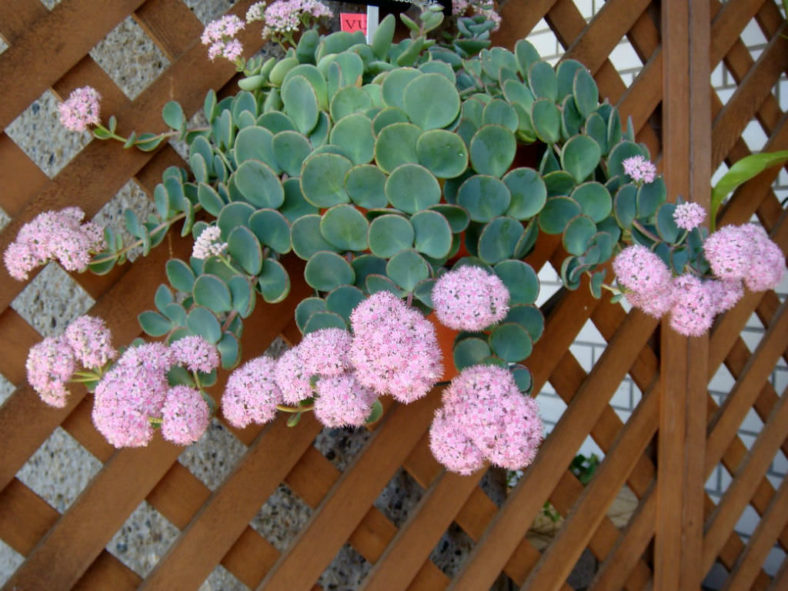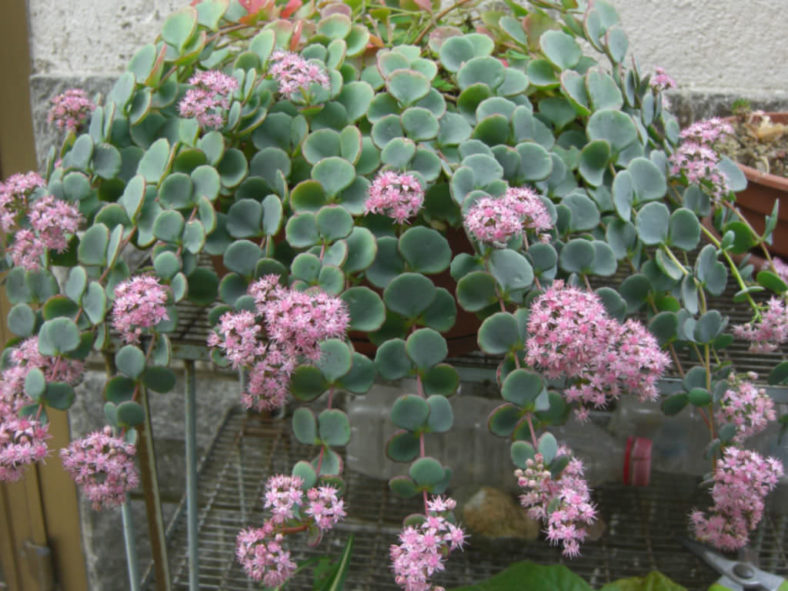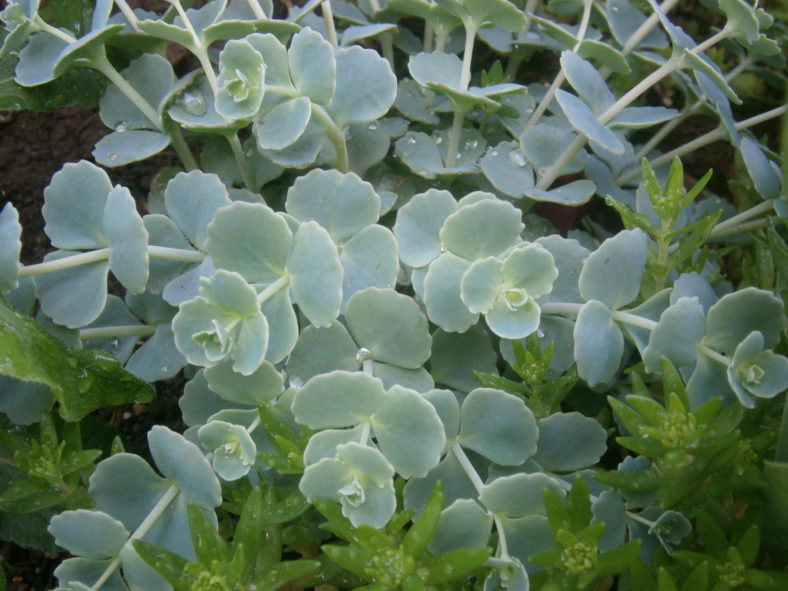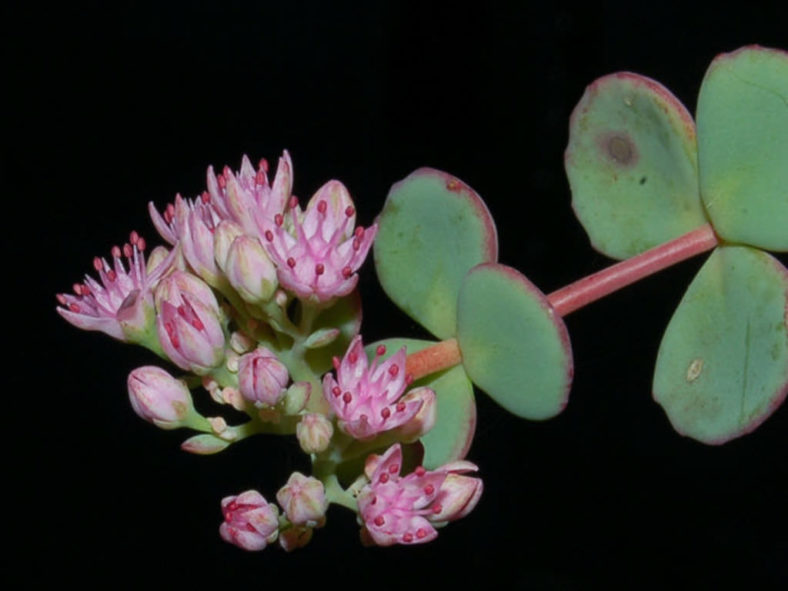Scientific Name
Hylotelephium sieboldii (Sweet ex Hook.) H. Ohba
Common Name(s)
October Daphne, October Daphne Stonecrop, October Stonecrop, October Plant, Siebold's Stonecrop, October Daphne, October Daphne Stonecrop, October Plant, October Stonecrop, Showy Stonecrop, Siebold's Sedum, Siebold's Stonecrop, Stonecrop
Synonym(s)
Hylotelephium sieboldii var. sieboldii, Sedum sieboldii
Scientific Classification
Family: Crassulaceae
Subfamily: Sempervivoideae
Tribe: Telephieae
Genus: Hylotelephium
Etymology
The specific epithet "sieboldii" (pronounced see-BOLD-ee-eye) honors Philipp Franz von Siebold (1796-1866), a German physician, botanist, and traveler.
Origin
Hylotelephium sieboldii is native to Japan (Shodoshima, Shikoku).
Description
Hylotelephium sieboldii, formerly known as Sedum sieboldii, is a beautiful, low-growing succulent that sends out unbranched stems from a short rootstock. The stems are ascending or hanging over the edges of the pot and can grow up to 12 inches (30 cm) long. The leaves are blue-green and have round tips and margins with few low, undulating serrations. They grow in whorls of 3 around the stem and can reach a diameter of 8 inches (2 cm). The foliage dies down in winter, but new growth appears in spring.
The bright pink flowers are star-shaped and appear in fall in round clusters at the end of the stems.

How to Grow and Care for Hylotelephium sieboldii
Light: This succulent prefers full sun. It tolerates light to partial shade in hot summer climates but will produce weak, floppy growth when grown in too much shade. Plant your H. sieboldii in an area of your garden with 6 hours of sunlight daily.
Soil: H. sieboldii does not need rich soil but requires excellent drainage. Choose a commercial potting mix for succulents, or make one yourself.
Hardiness: This plant is cold-hardy and tolerant of heat and drought, making it a popular outdoor succulent. H. sieboldii can withstand temperatures as low as -40 to 30 °F (-40 to -1.1 °C), USDA hardiness zones 3a to 9b.
Watering: The best way to water H. sieboldii is to use the "soak and dry" method. Get the soil completely wet, and then wait until it is dry before watering again.
Fertilizing: Feed annually with a balanced fertilizer. According to package directions, apply the fertilizer to the soil in spring as new growth appears.
Repotting: Plants in containers require little more care than those in gardens. Repot your H. sieboldii when it outgrows its current pot by moving it to a larger pot to hold the plant better. Spring is the best time to repot this plant. Make sure the soil is dry before you begin the repotting process.
Propagation: This succulent can be grown from seeds, division, or stem cuttings. Sow seeds in spring. Dividing your H. sieboldii is easy and can be carried out at almost any time in the growing season, though it is probably best done in spring or early summer. For propagation by stem cuttings, summer is the ideal time.
Learn more at How to Grow and Care for Hylotelephium.
Toxicity of Hylotelephium sieboldii
H. sieboldii can be mildly toxic to humans and animals.
Cultivars of Hylotelephium sieboldii
Links
- Back to genus Hylotelephium
- Succupedia: Browse succulents by Scientific Name, Common Name, Genus, Family, USDA Hardiness Zone, Origin, or cacti by Genus
Photo Gallery
Click on a photo to see a larger version.


